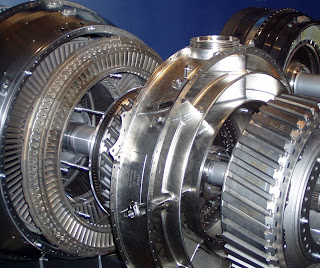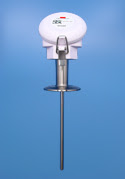How it works, in the company's own words..."The pureO3 sensor uses a gas permeable membrane to separate the sample from the electrochemical cell inside. Ozone diffuses through the membrane in direct proportion to the partial pressure of ozone outside the sensor.The cathode and anode inside the sensor are polarized with a voltage to enable the electrochemical reaction of ozone. Ozone is reduced at the cathode while the anode is oxidized, producing a current in direct proportion to the amount of ozone present. The very low current developed by these sensors allows them to have a long life with low maintenance. An embedded temperature sensor enables temperature compensation to adjust for the changing permeability of
the membrane with temperature. In addition, the instrument uses the temperature value to convert the ozone partial pressure signal to a dissolved ozone concentration value by compensating for the changing solubility of ozone with temperature."
Benefits to the user from the ISM® based sensor.
- Full sensor identification by type and serial number.
- Calibration history with actual calibration, factory calibration, and last three calibration.
- Programmable timer to facilitate maintenance planning, reducing downtime.
- Starting calibration interval of 90 days.
- Time to maintenance function integrates ozone concentration over time, indicating replacement time for membrane body and electrolyte.
- Dynamic Lifetime Indicator for inner body used ozone concentration integration to predict life of inner body and membrane. Starting values, membrane body lifetime 180 days, inner body 1080 days.
- Sanitization counter allows the limit of ozone concentration and duration of sanitization cycleto be defined on the transmitter.
The pureO3 sensor with ISM operates with the M800 and M300 transmitters. ISM features enable users to maximize the lifetime of the sensors and minimize downtime by predicting when sensor maintenance is required. Contact a product application specialist for all the details. Share your process measurement challenges with experts, combining your process knowledge with their application expertise to develop the best solutions.




























